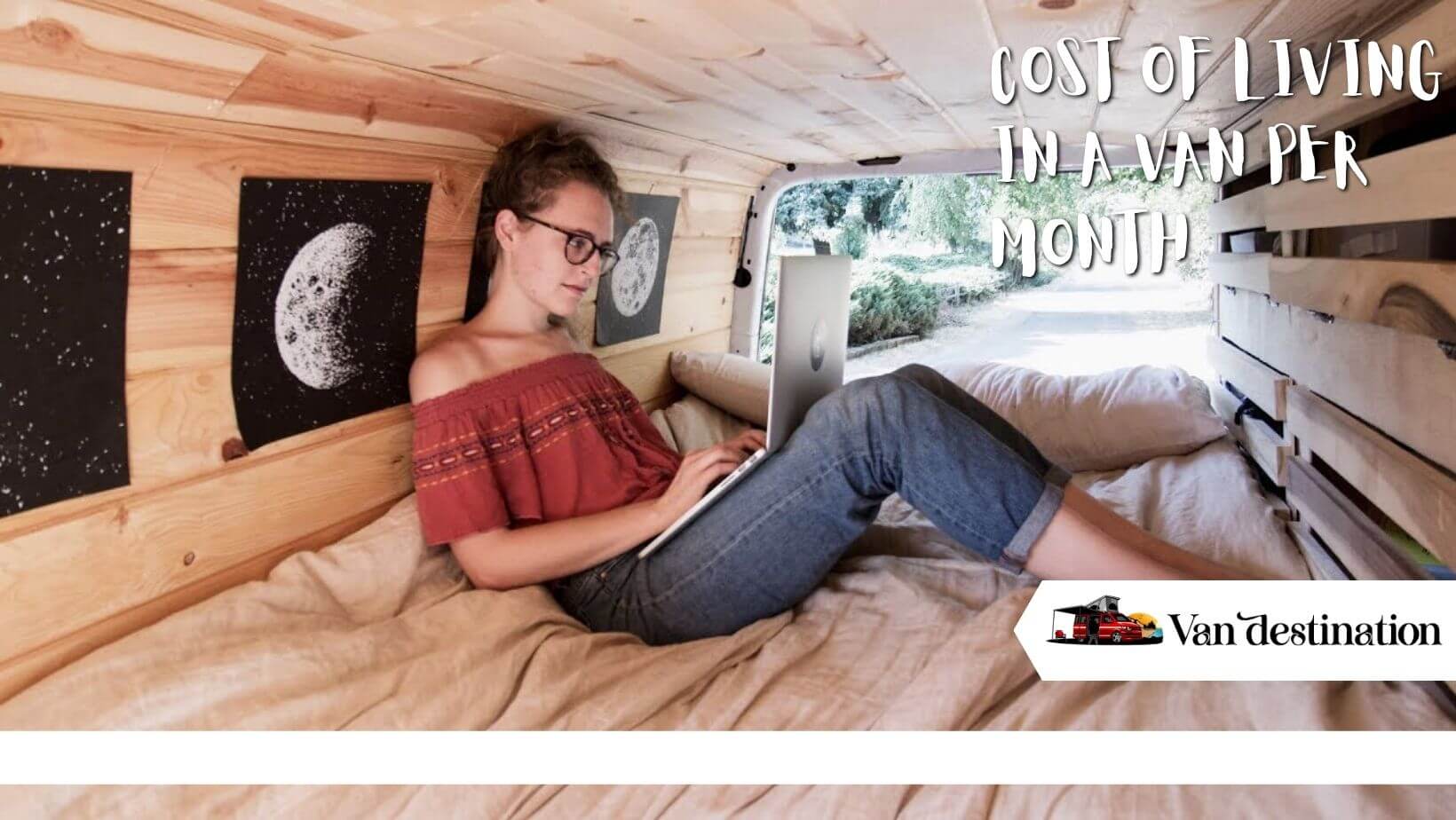Cost of Living in a Van Per Month

Living in a van has become an increasingly popular lifestyle choice for many people around the world. Whether it’s to save money, travel more freely, or simply live a minimalist lifestyle, there are countless reasons why someone might choose to call their van home. However, one of the most important factors that need to be taken into account when considering living in a van is the cost of living.
In this article, we will explore the cost of living in a van per month and break down all the expenses you can expect to incur on a regular basis. From fuel costs and food expenses to parking fees and maintenance costs, we will provide you with valuable insights into what it really takes to sustain this unique way of life on a budget.
Living in a Van is a Lifestyle Choice
Living in a van is an alternative lifestyle that has gained popularity in recent years. It provides flexibility and freedom to those who want to explore the world on their own terms. However, living in a van also comes with its own set of challenges, one of which is managing the cost of living.
The cost of living in a van per month varies depending on several factors such as location, lifestyle choices, and maintenance costs. For instance, if you choose to live near urban areas or tourist hotspots where parking fees are high and space is limited, your monthly expenses will be higher compared to someone who chooses to live off-grid.
Another significant expense for van dwellers is food and fuel costs. Since most vans have limited storage space for food items, it’s essential to buy groceries frequently which can add up quickly over time.
Van Purchase and Conversion Costs
Living in a van is becoming increasingly popular as people seek alternative lifestyles and ways to save money. However, before hopping into the driver’s seat, it’s important to consider the cost of living in a van per month. There are two major costs associated with living in a van: the initial purchase and conversion costs.
Van purchase costs vary depending on the make, model, age, and condition of the vehicle. A new van can cost anywhere from $20,000 to $100,000 or more. However, many people opt for used vans which can be purchased for much cheaper prices ranging from $5,000 to $30,000. After purchasing your van you’ll need to convert it into a livable space which also comes with its own costs. Depending on how elaborate your conversion is you could expect to spend an additional $1,500-$10k on materials alone.
Also Read: Van Life on a Budget
Monthly Expenses Breakdown (food, gas, etc.)
Living in a van can be an adventurous and cost-effective way to travel and explore. However, it is essential to consider the breakdown of the monthly expenses before embarking on this lifestyle. The cost of living in a van per month varies depending on several factors such as the type of van, location, and personal preferences.
The primary expenses for living in a van include food, gas, insurance, maintenance costs, parking fees, and communication bills. Food expenses can vary depending on the individual’s dietary habits and cooking skills. On average, most people spend around $300-500 per month for groceries and eating out while living in a van. Gas is another significant expense that depends on how often you move around or travel long distances. A typical budget for gas can range from $100-300 per month if you are driving regularly.
Insurance and Maintenance Costs
Living in a can, or living in a tiny house on wheels, has become an increasingly popular lifestyle choice. The allure of living with minimal possessions and the freedom to travel wherever you please is enticing.
However, before making the switch, it’s important to consider the cost of living in a can per month. One of the biggest expenses for can dwellers is insurance. Insurance costs for tiny homes on wheels can vary widely depending on where you live and how much coverage you need.
Some insurance companies may not even offer coverage for tiny homes on wheels, so it’s important to do your research and find one that specializes in this type of insurance. On average, you can expect to pay around $500-$1,000 per year for insurance. Another cost to consider is maintenance.
Ways to Save on Van Living Expenses
Living in a van can be an exciting and liberating experience, but it can also come with its challenges. One of the most significant factors to consider when living in a van is the cost of living expenses. Although living in a van is generally cheaper than renting an apartment or owning a house, it still requires careful planning and budgeting to ensure that you don’t overspend.
One way to save on van living expenses is by being mindful of your utility usage. This means turning off lights when not in use, taking shorter showers, using energy-efficient appliances and devices, and finding alternative sources of power like solar panels. Another way to reduce your costs is by cooking at home instead of going out to eat often. You can stock up on non-perishable food items like canned goods, pasta, rice, and beans that are easy to prepare and won’t spoil quickly.
Personal Experiences and Tips from Van Dwellers
For many people, the idea of living in a van may seem like an extreme lifestyle choice. However, for an increasing number of individuals, this way of life has become a popular option due to its affordability and mobility. Living in a van per month offers many benefits, including the ability to travel freely and explore new places without worrying about the cost of rent or mortgage payments.
While there are undoubtedly some challenges associated with van dwellings, such as limited space and lack of amenities, many people have found ways to live comfortably within their means. Personal experiences from van dwellers have shown that it is possible to live on a tight budget by making small changes in daily habits and routines. For example, cooking meals at home instead of eating out at restaurants can save a significant amount of money over time. Additionally, finding free or low-cost camping spots can help reduce expenses associated with overnight stays.
Conclusion
Living off canned foods can be an affordable solution for those on a tight budget. By calculating the cost per can and planning meals accordingly, it is possible to keep monthly grocery expenses low without sacrificing nutritional value. However, it is important to note that a diet consisting solely of canned foods may lack certain essential nutrients and lead to health issues in the long run. Therefore, it’s advisable to incorporate fresh produce and other wholesome foods into your diet whenever possible. Ultimately, the cost of living in a can per month may be cheap but maintaining a healthy lifestyle should always be a top priority.
Also Read: Organizing Your Tools in a Van



